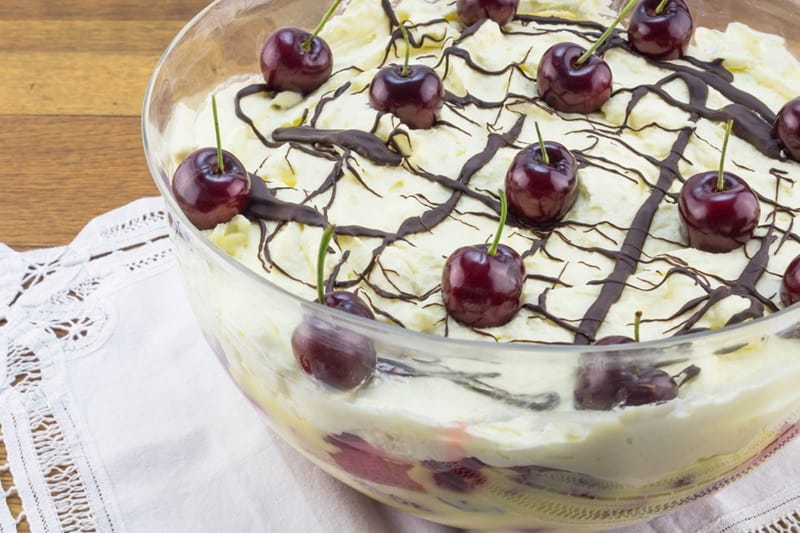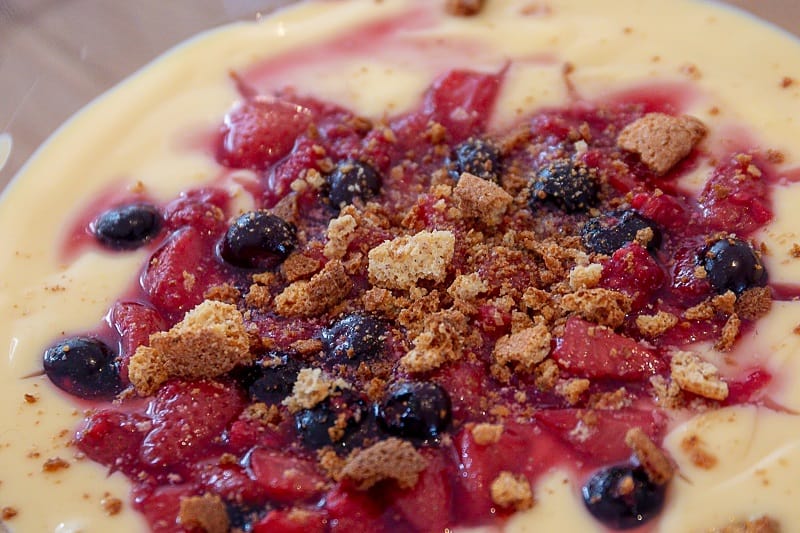The thing about trifles, more specifically the custard part of it, is the difficulty in getting things just right.
Although the recipe is simple enough, and easy enough to follow, everything has to be made and left to cool with enough time to add the next layer. In the midst of it all, things can go awry.
One common trifle complaint is the custard refusing to set, but there are actually many tricks you can use to resolve the problem.
Why Won’t My Custard Set?
There are actually many reasons why your custard might not set, including the type of recipe you’ve used, the ingredients you’ve added to the mix, and how long you’ve left things to boil and/or cool.
Eggs are overcooked or undercooked
Homemade custard is made with a number of ingredients, including eggs. Those eggs can be both overcooked and undercooked.
Timing is everything. If you use too much heat, or you add your eggs at the wrong time, your custard mix will turn thick, lumpy, and looking something akin to scrambled eggs.
If you don’t use enough heat, however, the custard mix might not thicken up at all.
Not enough custard powder, or too much water
If you are using custard powder, out of a tin, you may find that you haven’t used enough of the powder mix, or that you’ve added too much water.
Custard needs more time in the fridge
There is also a chance that you haven’t left the custard to cool in the fridge for long enough before adding the rest of your trifle ingredients.

How to Fix Runny Custard or Custard That Won’t Set
It doesn’t matter whether you’re using custard for a trifle, or for any other dish, there are plenty of ways to fix homemade custard so that it isn’t reminiscent of soup.
Why not try a few of these fixes.
1. Chill in the fridge
Once heated, mixed, and then simmered, the custard should be cooled.
You can do this in a number of ways, including placing the custard into a suitable dish and then refrigerating for around two to three hours.
If you find that your custard trifle develops a skin on the top as it cools, try adding clingfilm directly over the top before you put it in the fridge. This should prevent the film/skin developing.
You can also cool the heated custard by transferring to a suitable dish, then placing the dish into another, larger bowl (or similar) of cold water.
The cold water will allow the hot custard to cool enough so that you can pour it over your other trifle layers, without having to wait hours for it to sit in the fridge.
You must ensure that the cold water doesn’t get into the dish with the custard in it, however. This will water the custard down and it’ll have less chance of setting firm.
Some people prefer to leave custard trifle in the refrigerator overnight to give it more of a chance of setting firm. You should aim to give it at least two hours, but longer is better.

2. Re-simmer it
If you find that your custard has become runnier while it was left in the fridge to cool, you can add it to a pan on the hob or stove, turn the heat up, and simmer it for a few more minutes.
In some cases, this will help the mixture to thicken up and cook for a little longer. Just remember not to overcook it.
If you haven’t even gotten to the part where you tip the custard into a suitable dish and then put in the fridge to cool, but the mixture is refusing to thicken, you should try adding thickening agents.
3. Add flour
You can add flour to custard to help thicken it up, which will, in turn, help it to set when it cools for use in a trifle.
For every (approximate) 250 ml of custard you have made, you should add a mixture of 4 tablespoons of water plus 2 tablespoons of flour.
The mixture should be stirred well before you add it to your custard mix. You will also need to stir/whisk well once it has been added; otherwise, it’ll result in lumpy custard with clumps of flour in it.
4. Add cornstarch

There are actually a couple of different thickening agents you can add to custard to help it thicken up during the cooking process and beyond.
As well as flour, you can also use cornstarch, although you will need to use different amounts than the flour-to-water ratio.
For every (approximate) 250 ml of custard in the pan, you should add a mixture of one tablespoon of water and one tablespoon or corn starch.
Just as with flour, you will want to make sure that the water-cornstarch mixture has been whisked or stirred well before adding, and then the entire custard-cornstarch mix should whisked and stirred well too. This will help reduce the likelihood of lumps or clumps.
You should be mindful when adding cornstarch, flour, or any other kind of thickening agent to your custard.
Too much can cause a distortion of the flavour, and it can also cause an over-thickening or clumping of the custard, making it rather unpleasant to eat.
5. Add tapioca
Tapioca is another thickening agent you can add to custard to make it thicker and more likely to set for a trifle.
You will need the same ratio as cornstarch: one tablespoon of tapioca for one tablespoon of water, mixed well, then added to the custard and mixed well again.
A whisk is best for the mixing job, if you want to ensure that all of the lumps are gone.
6. Use custard powder
Custard powder is a lot easier to use in a trifle than making custard from scratch, with all natural, raw ingredients.
If your custard comes out too runny and doesn’t set for your trifle, you can add more of the custard powder to the mix.
My grandmother would always use more custard powder than the recommended amount, or less milk/water. The thicker it is, the firmer it will set (in theory).
Just remember the custard will thicken as it cools, so don’t make it too thick when you’re heating it.

Kim is a writer with more than a decade of experience, and a food enthusiast. When she’s not spending her time writing about her favourite dishes, you can find her in the cake aisle of her local supermarket, or making a mess in the kitchen.

